Expert Guides
How to Download Youtube MP3S With the Ultimate Downloader
Learn how to download YouTube MP3s with the Ultimate Downloader for top-quality audio conversions – elevate your music experience today!
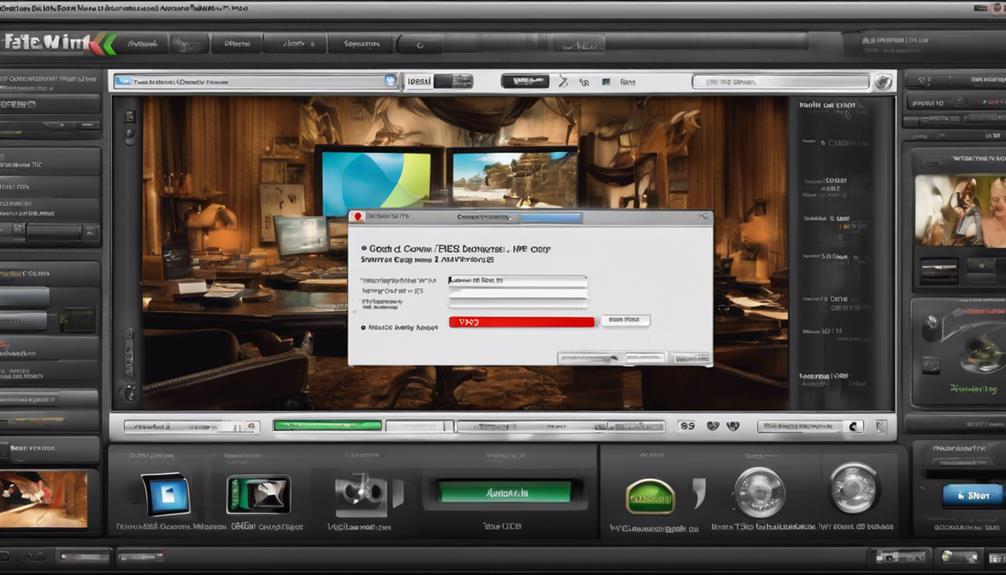
To download YouTube MP3s with the Ultimate Downloader, first install Youtube-Dl using 'sudo apt-get install youtube-dl' and Ffmpeg for conversions. Choose desired video quality and format, then convert the video to MP3 using Ffmpeg. Explore audio stream extraction options like AAC and MP3, considering formats for better quality. Make sure to save in high-quality MP3 for best sound. Utilize Snap packages for a more efficient experience but also be mindful of legal considerations and optimize your settings for smooth downloads. Following these steps will help streamline the process while enhancing efficiency and quality outcomes.
Key Takeaways
- Install the Ultimate Downloader like youtube-dl for MP3 extraction.
- Use youtube-dl with appropriate options for high-quality MP3 downloads.
- Specify desired audio format (MP3) and quality settings (320kbps).
- Ensure legal compliance and respect creators' rights when downloading.
- Optimize the process with efficient tools like youtube-dl for MP3 extraction.
Installation of Youtube-Dl and Ffmpeg
To get started with downloading YouTube MP3s, we'll need to install Youtube-Dl and Ffmpeg on your system.
Installing Youtube-Dl in Ubuntu is a breeze – simply use `sudo apt-get install youtube-dl` for quick command-line access. Don't forget to upgrade Youtube-Dl regularly by running `sudo youtube-dl -U` to enjoy the latest features and improvements.
Once you've downloaded the desired FLV files from YouTube, verify their success by using `ls *flv` before proceeding to convert them. For high-quality audio output, convert your FLV files to MP3 format using Ffmpeg with the command `ffmpeg -i filename.flv -acodec libmp3lame songname.mp3`.
Remember to tidy up your system by removing the original FLV file with `rm filename.flv` after conversion to save space.
With these simple steps, you can effortlessly download and convert your favorite YouTube videos into MP3s with ease and efficiency.
Choosing Video Quality and Format
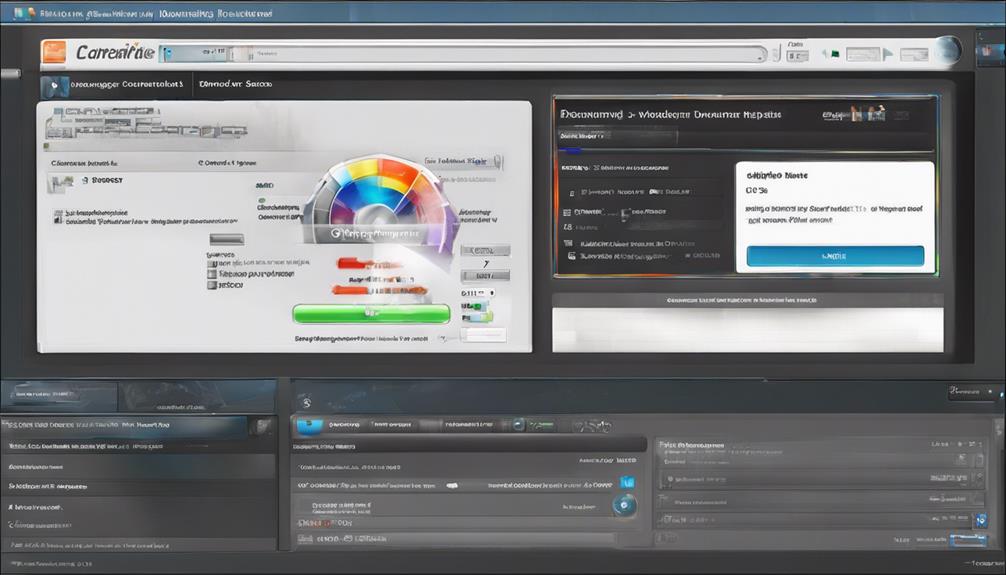
When choosing the video quality and format for your YouTube MP3 download, it's crucial to examine the available options thoughtfully. Make sure to verify the compatibility of the selected format with your intended playback device or platform.
Additionally, contemplate suggestions for selecting the best resolution to improve your listening or viewing experience.
Quality Options Available
Exploring the available quality options for YouTube MP3 downloads allows users to tailor their audio experience to their preferences. When using the best YouTube to MP3 converters, you can select from quality settings like 320kbps, 256kbps, or 128kbps.
Higher quality settings, such as 320kbps, offer superior audio fidelity but result in larger file sizes. On the other hand, lower quality settings like 128kbps reduce file size but may compromise audio clarity. Choosing the right quality option depends on finding a balance between audio quality and file size that suits your needs.
Format Compatibility Check
Have we confirmed the format compatibility of the YouTube MP3 downloader to guarantee it supports the desired video quality and format? When choosing a YouTube to MP3 converter, it's important to verify that it can handle various video resolutions like 720p, 1080p, or higher for the MP3 conversion process. Additionally, check if the downloader can extract audio from YouTube videos in formats such as MP3, M4A, or other preferred audio formats. Look for customization options that allow adjusting audio quality, bitrate, and codec settings to customize the MP3 file according to your preferences. Confirm that the downloader provides a smooth experience for selecting the video quality and format before downloading the MP3 file.
| Video Quality | Supported Formats | Customization Options |
|---|---|---|
| 720p | MP3, M4A | Audio quality, Bitrate |
| 1080p | MP3, AAC | Codec settings |
| Higher | WAV, FLAC |
Resolution Selection Tips
Let's consider factors such as device compatibility and storage space when selecting the video quality and format for a premium viewing experience. When using a YouTube MP3 Downloader, resolution selection plays an important role in the viewing experience.
Opting for higher resolutions like 1080p or 4K enhances visual clarity but demands more data and storage capacity. On the other hand, lower resolutions such as 480p or 720p consume less data and space but may sacrifice visual quality.
Some converters offer flexibility in choosing audio formats like MP3, M4A, or WAV. To ensure a top-notch viewing experience, it's vital to align your resolution and format choices with your playback needs and device specifications. Make informed decisions to enjoy high-quality videos without compromising device performance.
Converting Video to MP3 With Ffmpeg
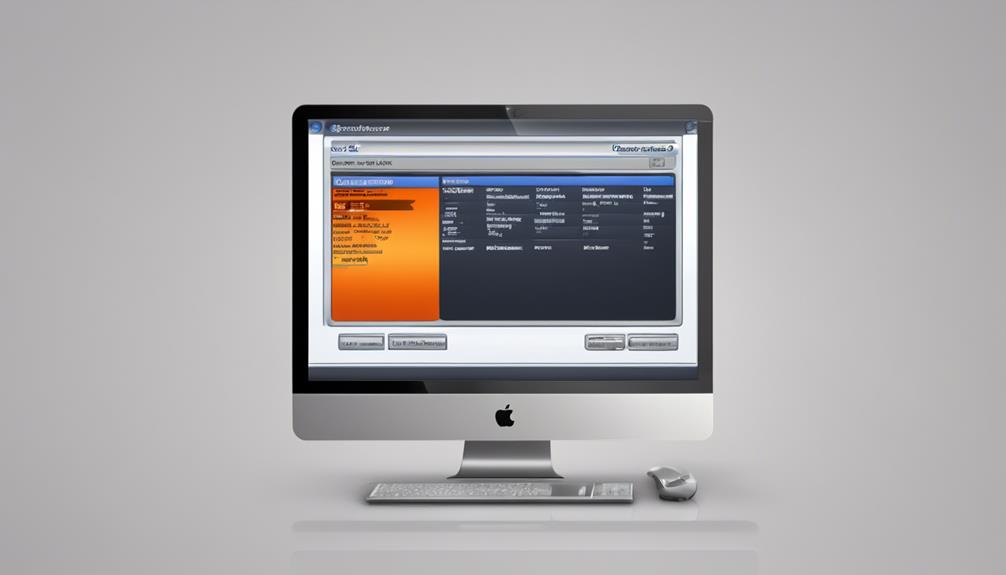
Using Ffmpeg, we effectively convert video files to MP3 audio format with exceptional quality.
Ffmpeg, a versatile multimedia framework, supports a wide range of input video formats and output audio formats, including MP3. The process is straightforward: specify the input video file, the desired output MP3 file, and any additional options for customization.
Ffmpeg guarantees high-quality audio output, making it a reliable tool for converting YouTube videos to MP3. Once the conversion is complete, users can easily tidy up their workspace by removing the original video file.
This method not only allows you to convert YouTube to MP3 but also provides a seamless experience for downloading music from Youtube. With Ffmpeg's capabilities, you can enjoy your favorite audio content in the MP3 format without compromising on quality.
Experience the innovation and efficiency of Ffmpeg for all your video to MP3 conversion needs.
Exploring Audio Stream Extraction Options

When exploring audio stream extraction options for downloading YouTube MP3s, we consider various formats, extraction tools, and quality aspects.
Understanding the different audio stream formats available and choosing the appropriate extraction tools can greatly impact the quality of the MP3 downloads.
Audio Stream Formats
Exploring various audio stream formats such as AAC, MP3, and OGG opens up diverse options for extracting audio from YouTube videos for conversion to MP3. When considering YouTube to MP3 conversion, understanding the nuances of these formats is essential.
AAC offers high-quality sound in a smaller file size, ideal for storage efficiency. MP3, a widely used format, balances sound quality and file size, ensuring compatibility with various devices. OGG, known for its open-source nature, provides flexibility and good sound quality.
Extraction Tools
Let's explore the world of audio stream extraction tools, essential for efficiently capturing audio from YouTube videos. Tools like youtube-dl offer direct extraction of audio streams from YouTube videos, allowing customization of formats, bitrates, and quality.
Users can specify preferences such as extracting the best audio quality, mobile-friendly versions, or HD audio. These tools support options like specifying YouTube URLs, resuming downloads, and accessing a full list of switches for a seamless extraction experience.
Quality Considerations
To improve the audio quality of extracted streams from YouTube videos, it's vital to take into account various formats such as MP3, AAC, or FLAC, and understand the significance of bitrate settings. When using a YouTube downloader, selecting the right format can greatly impact the sound quality of the extracted audio.
MP3 is a popular choice for high-quality playback, while formats like AAC or FLAC offer different levels of audio quality to cater to individual preferences. Paying attention to bitrate settings during extraction is essential in maintaining the desired audio quality.
Saving Audio in High-Quality MP3
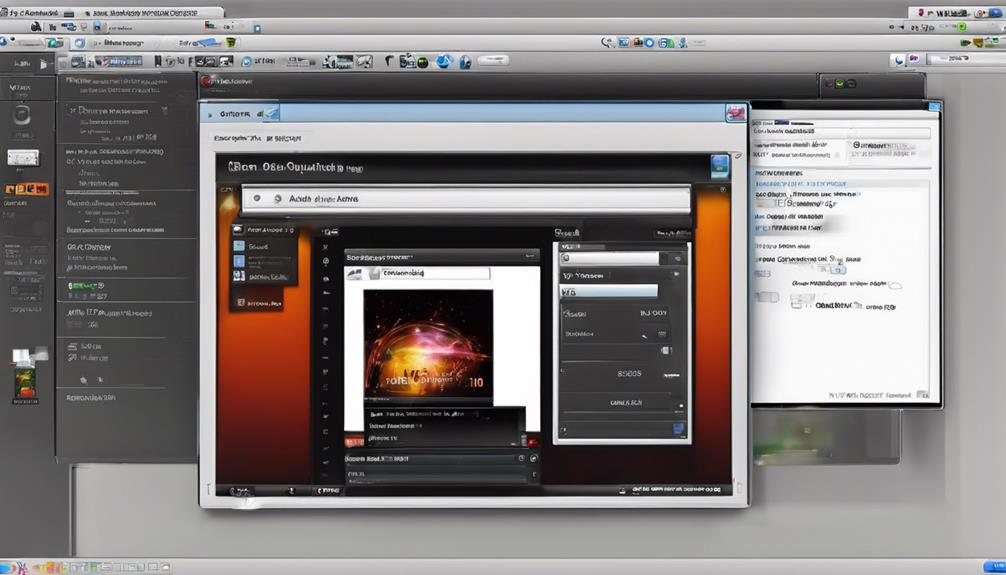
When aiming to preserve the fidelity of audio obtained from YouTube videos, choosing the appropriate format and bitrate becomes essential for saving high-quality MP3s. To achieve this, utilizing a reliable Video Downloader is important. These tools enable users to download audio from YouTube videos and convert them into MP3 format efficiently.
When selecting the bitrate, opting for higher values like 320kbps guarantees a better audio quality, mirroring the original sound as closely as possible. It's important to prioritize maintaining the integrity of the audio during the conversion process to obtain crisp and clear MP3 files.
Utilizing Snap Packages for Efficiency
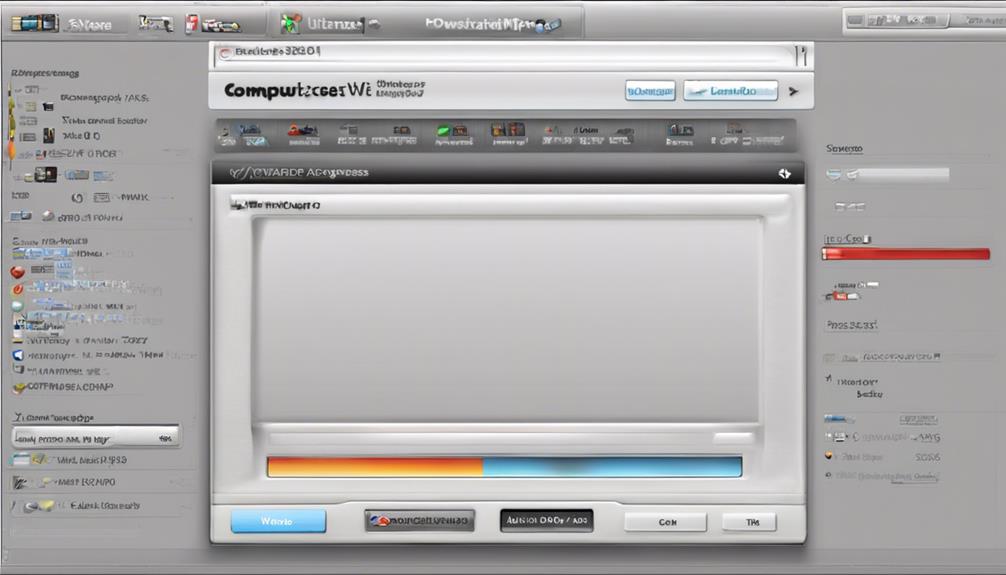
Shifting our discussion from saving high-quality MP3s from YouTube, we now redirect our attention to the efficiency of utilizing Snap Packages. Snap packages offer a streamlined way to install and manage software on various Linux distributions.
By utilizing the youtube-dl snap package, we gain easy access to the latest version of the YouTube downloading tool. These packages are self-contained and isolated, minimizing conflicts with system libraries and dependencies.
With snap packages, manual dependency resolution is a thing of the past, and automatic updates for installed applications become a seamless process. Installing youtube-dl as a snap package greatly enhances efficiency and reliability in downloading MP3s from YouTube.
This streamlined approach guarantees that the downloader stays up to date, making the process of extracting audio from YouTube videos a smooth and hassle-free experience. Embracing snap packages for your downloading needs can lead to a more efficient workflow, allowing you to focus on enjoying your favorite audio content hassle-free.
Legal Considerations for Youtube Downloads
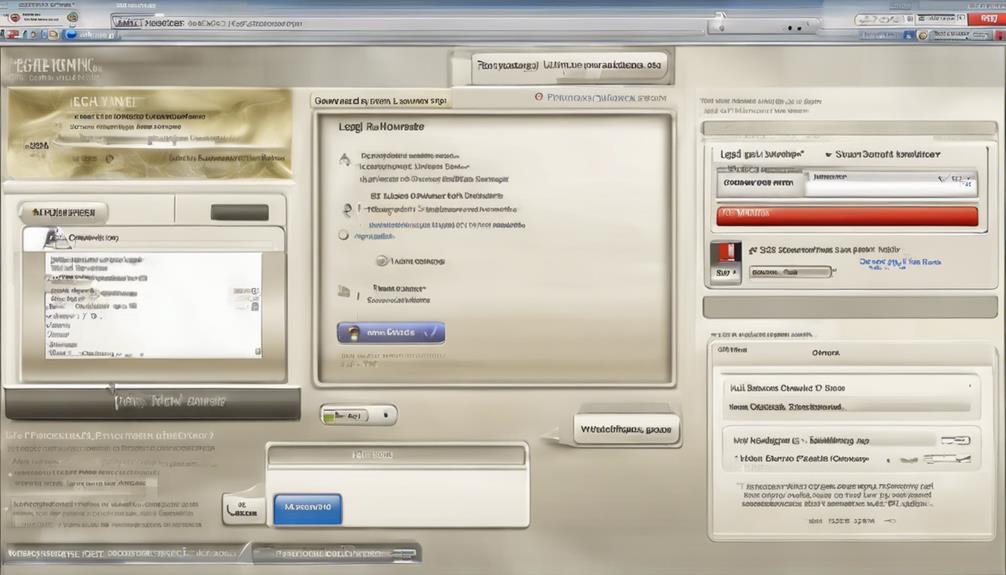
Respecting creators' rights is essential when considering legal considerations for downloading content from YouTube. It's vital to obtain proper permission before downloading any YouTube content to complete.
To stay within legal boundaries, avoid downloading copyrighted material without authorization. Always use trusted sources and platforms to prevent malware or privacy risks when obtaining MP3 files.
By ensuring responsible consumption of downloaded content and adhering to copyright laws, you not only stay within legal boundaries but also support creators. Remember, responsible consumption of downloaded content is key to maintaining a healthy online environment.
Optimization Tips for Smoother Downloads
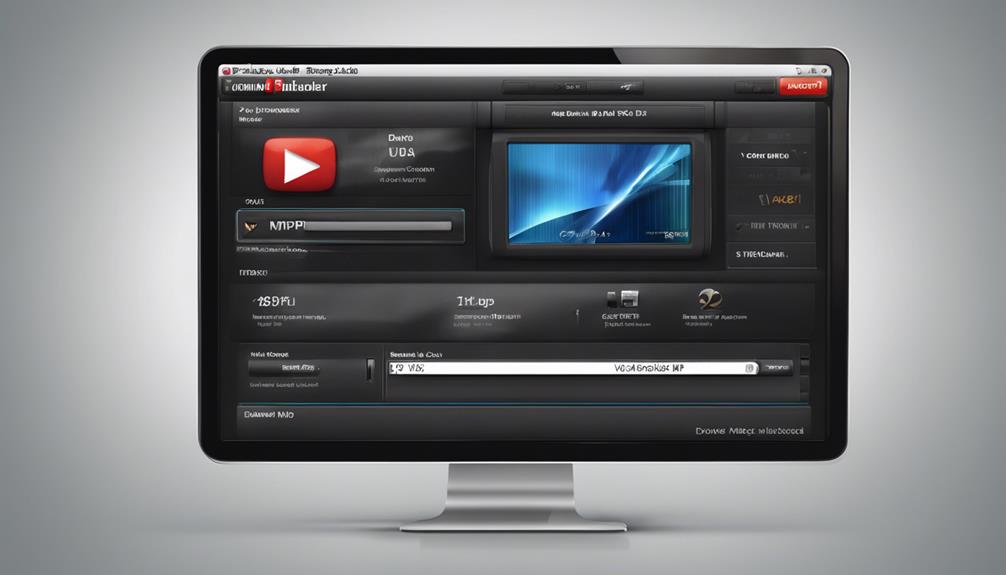
For enhanced efficiency in downloading YouTube MP3s, consider customizing youtube-dl options to optimize audio quality and format. By tailoring settings, you can guarantee that you download the best possible audio for your needs.
Additionally, using ffmpeg in conjunction with youtube-dl can streamline the conversion process to MP3, making it quicker and more efficient.
If you prefer a user-friendly interface, MediaHuman YouTube to MP3 is a great option for dedicated desktop downloads.
Another tip for smoother MP3 downloads is to utilize the youtube-dl snap package, which can help enhance the overall downloading experience.
When selecting specific audio formats and bitrates, you can further fine-tune the quality of the MP3 files you download. These optimization tips won't only make your downloads smoother but also ensure that you obtain high-quality audio for your listening pleasure.
Frequently Asked Questions
How Do I Download an MP3 From Youtube?
Ensuring your safety is crucial when downloading MP3s from YouTube. This can be done using various converters, software, or browser extensions.
All you need to do is copy the YouTube video link, paste it into a reliable converter like Any Video Converter Free, and click download for MP3 conversion. Selecting secure converters is important to avoid malware risks and comply with copyright laws.
Enjoy top-notch MP3 downloads from YouTube with quick and effective conversion processes.
How Do I Save Just the MP3 From Youtube?
When saving just the MP3 from YouTube, simply paste the video link into a reputable converter, like X2Download. Choose your desired quality, such as 320kbps, for best audio results.
Enjoy unlimited downloads with no restrictions on conversions. X2Download, a browser-based tool, requires no software installation, adding convenience for users.
It's a fast and efficient way to extract audio from YouTube videos hassle-free.
How Do I Download MP3 From Youtube Music?
To download MP3 from YouTube Music, simply find a reliable converter or downloader that supports YouTube Music videos.
Copy the video link and follow the conversion steps provided by the tool to extract the audio as an MP3 file.
Enjoy your favorite tunes from YouTube Music in MP3 format for offline listening.
It's a quick and easy way to access your music on the go.
How Do I Download Music From Youtube Downloader?
When downloading music from YouTube, we copy the video URL, paste it into a downloader tool, select MP3 format, and start the download. Browser extensions like Free YouTube to MP3 Converter can streamline this process.
It's important to use safe and legal methods to respect creators' rights. Trusted sources like X2Download offer fast, high-quality conversions without compromising safety or user experience.
Conclusion
To sum up, downloading Youtube MP3s with the Ultimate Downloader can be a convenient way to enjoy your favorite music offline. Remember to choose the right video quality and format, convert with Ffmpeg, and explore audio stream extraction options for the best results.
Don't forget to save your audio in high-quality MP3 for the best listening experience. And always keep legal considerations in mind while downloading content. When it comes to downloading Youtube MP3s, the possibilities are endless!
AI Generator
Ownership Battle in the Age of AI-Generated Music

The emergence of artificial intelligence in music production has ushered in a new era of innovation. However, it has also sparked debates over ownership rights. As AI-generated music becomes more common, concerns about who owns these creations are brought to light.
This article delves into the legal battles and ethical debates surrounding AI-generated music ownership.
Defining Ownership in AI-Generated Music
In a traditional sense, determining the owner of the copyrighted material is straightforward. However, with AI-generated content, the situation becomes more complex.

Is the creator of the algorithm that generated the music the owner? Is it the person who trained the algorithm? Is it possible to claim ownership over something not directly created by human hands?
Grimes’s Controversial Tweet: A Case Study
Grimes’s tweet about allowing her voice to be used in AI-generated music exemplifies this issue. She said she would sell her digital soul for $10 million, granting an AI company permission to use her voice as they wished. The tweet sparked controversy, with some seeing it as selling out and others viewing it as a clever move.
Legal Battles and Intellectual Property
Ownership rights of AI-generated music are just starting to be tested in courts. In 2018, Sony won a landmark case against musician Kevin Parks Jr., who claimed he had created songs using Sony’s software without permission or compensation. The court ruled in favor of Sony since their software was used in creating Parks’ songs.
This ruling raises questions about whether algorithms can be considered intellectual property or merely tools used by creators. If algorithms are deemed intellectual property, there may be issues surrounding their licensing for commercial use.
Record Labels and the Changing Dynamics
As record labels adapt to the rise of AI-generated content, they, too, must confront ownership rights issues. Record labels have historically owned much of the copyright associated with artists’ work; however, this dynamic may change as more artists turn to AI-generated music.
If an artist uses an AI program to create a piece of music, who owns the rights to that work? Is it the artist or the creator of the algorithm that generated it?
Implications for Streaming Platforms
The rise of AI-generated music also impacts streaming platforms like Spotify and Apple Music. These platforms have already faced criticism for their low royalty payouts to artists, and if AI-generated content becomes more prevalent, this issue may only worsen.
Additionally, as record labels lose some control over ownership rights, they may push for higher payouts from these streaming services.
Public Domain and AI-Generated Music
The implications of AI-generated music on the public domain are worth considering. AI algorithms often use existing music data to create new compositions, raising questions about whether AI-generated music should be considered part of the public domain or if new legal frameworks are needed to protect both original creators and AI developers.
When an AI algorithm generates music based on existing works, it can be difficult to determine if the resulting composition is a derivative work or an entirely new creation. If AI-generated music is considered part of the public domain, it may limit the rights of original creators whose work was used as input. On the other hand, if AI-generated music is granted copyright protection, it could potentially stifle creativity and limit access to cultural works.
Moral Rights and AI-Generated Music
The concept of moral rights is particularly relevant in the context of AI-generated music. Moral rights protect an artist’s right to be recognized as the creator of their work and to preserve the integrity of their creations. It is important to discuss how moral rights might apply to AI-generated music and the potential challenges that may arise.
In the case of AI-generated music, it can be difficult to determine who should be recognized as the creator: the original artist whose work was used as input, the developer of the AI algorithm, or both. Additionally, AI-generated music may inadvertently modify or distort the original work, potentially violating the moral rights of the original creator.
AI-Generated Music and Fair Use
The concept of fair use plays a significant role in the context of AI-generated music. Fair use is a legal doctrine that allows for the limited use of copyrighted material without requiring permission from the rights holder. It is important to discuss whether AI-generated music, which often relies on existing music data, can be considered fair use and the potential legal implications that may arise.
When AI algorithms use existing music as input, they may be seen as transformative, creating new works based on the original material. However, the extent to which AI-generated music can be considered fair use is not yet clearly defined in the law, and it may vary depending on the degree of transformation and the potential market impact on the original work.
In conclusion, addressing the additional topics of public domain, moral rights, and fair use in AI-generated music contributes to a more comprehensive understanding of the various legal and ethical issues surrounding this emerging technology. As AI-generated music becomes more prevalent, it is crucial for legal frameworks and industry practices to adapt in order to balance the rights of creators, AI developers, and the public interest.
The Future of Ownership Rights
In conclusion, ownership rights in the era of AI-generated music are uncertain at best. As more legal battles arise and ethical debates continue, it is clear that traditional copyright laws will need to adapt to keep up with technological advancements.
The struggle for ownership is just beginning, but it will undoubtedly shape the future of the music industry for years to come.
AI Generator
The Influence of Artificial Intelligence on The Creation of Music

A New Era of Creativity and Expression
Music has always been a strong reflection of human innovation and emotions. Throughout history, our voices and musical instruments have played a crucial role in expressing our feelings, telling stories, and building relationships with others. As technology has advanced, our ways of creating music have also progressed.
Modern musicians now have access to various tools, enabling them to manipulate sound in unimaginable ways. Synthesizers can emulate virtually any sound, while digital audio workstations facilitate precise editing and manipulation of recorded tracks. And now, the rise of artificial intelligence (AI) offers musicians even more possibilities for music creation.
AI Applications in the Music Industry
AI is being utilized in multiple ways within the music industry. One popular application is generating original compositions based on existing musical data sets. By analyzing millions of songs across genres and periods, AI algorithms can identify patterns and generate new melodies or chord progressions that fit within those patterns.

Another application involves using AI to enhance existing performances or recordings. For instance, software like iZotope’s RX can isolate individual instrumental tracks from a mix and remove unwanted noise or artifacts without impacting the rest of the recording.
Unintended Consequences and Concerns
However, as with any emerging technology, unintended consequences arise from using AI in music creation. One worry is that AI-generated music might lack the emotional depth and nuance that human performance offers. While an algorithm can create technically proficient melodies or chord progressions, it may not capture the same sense of emotion or passion found in a live performance.
Another concern revolves around ownership rights of AI-generated music. If an algorithm generates an original composition based on data sets owned by multiple parties (such as record labels or streaming platforms), who has the rights to that composition? This question has already sparked legal battles between artists collaborating with AI algorithms and those claiming ownership over their contributions.
Harnessing AI for Collaboration and Growth
Many musicians and industry professionals see AI as an opportunity for collaboration and growth. AI can be a creative assistant, inspiring artists, helping them overcome writer’s block, or even offering suggestions to improve their compositions. As AI technology continues to evolve, its ability to learn from and adapt to a musician’s style will improve, further enhancing the creative process.
AI in Music Education and Talent Discovery
AI also has the potential to revolutionize music education and talent discovery. With AI-powered music learning apps and platforms, students can receive personalized instruction based on their skill level and learning style. Furthermore, AI can analyze and identify undiscovered talent by evaluating their performances and predicting their potential for success.

Addressing Ethical Considerations and Regulations
To ensure the responsible integration of AI into the music industry, it is essential to address ethical considerations and establish regulations. For instance, guidelines should be set to ensure that AI-generated compositions do not infringe on existing copyrights or that AI technology is not used maliciously to plagiarize or manipulate the work of others.
Additionally, as AI-generated music becomes more prevalent, it is crucial to develop clear standards for crediting the contributions of both human artists and AI algorithms to a given work. This will help to prevent legal disputes and foster a fair and transparent environment for all parties involved.
Ethical Considerations in AI-Generated Music
As AI-generated music becomes increasingly widespread, various ethical concerns emerge. Some of these concerns include the potential for AI-generated music to contribute to cultural appropriation, the dilution of traditional music styles, or the homogenization of music in general.
Cultural Appropriation
Cultural appropriation occurs when elements of one culture are adopted or used by members of another culture, often in a way that is disrespectful or exploitative.

AI-generated music, which often relies on large datasets of existing music, might inadvertently incorporate elements of various cultures without giving proper credit or understanding the cultural context. This can result in the misrepresentation or trivialization of the original culture and may lead to further marginalization of underrepresented communities.
Dilution of Traditional Music Styles
AI-generated music algorithms are often designed to identify popular patterns and trends within the music they analyze.
As a result, the output may lean heavily toward mainstream or widely-accepted styles, which can dilute traditional or less-popular music styles. Over time, this may result in a decline in the diversity of music genres and a loss of unique cultural expressions and heritage.
Homogenization of Music
The widespread use of AI-generated music could also contribute to the homogenization of music, as algorithms tend to create compositions based on patterns and trends found in existing data. This may result in technically proficient music lacking the distinctiveness and creativity found in human-generated compositions.
As AI-generated music becomes more prevalent, there is a risk that the rich tapestry of diverse musical styles and influences may be reduced to a more uniform, less imaginative landscape.
In conclusion, while AI-generated music offers exciting opportunities for innovation and new forms of creativity, addressing and considering the ethical implications of its widespread use is crucial. It is essential to develop ways to preserve cultural diversity and respect the heritage of various music styles while embracing the potential of AI in music creation.
Embracing the AI-Infused Future of Music
The increasing influence of AI in the music industry offers an exciting new frontier for creativity, collaboration, and innovation. By addressing the potential concerns and working together to create ethical guidelines and regulations, musicians, industry professionals, and AI developers can ensure that the integration of AI into the music landscape is both responsible and beneficial.
As we embrace this AI-infused future, we can look forward to new and innovative ways to create and enjoy music, while also remaining mindful of the potential pitfalls and challenges that come with any technological advancement. With the right approach, the future of music and AI has the potential to be a harmonious and groundbreaking partnership.
Despite these concerns, it’s undeniable that AI is revolutionizing the music industry in thrilling ways. It enables new forms of creativity and experimentation while also presenting unique challenges for artists and record labels alike. As we continue to navigate this new era of music creation, it will be fascinating to see how these unintended consequences evolve.
Podcast
Bridging the Gap: Harnessing the Power of Podcasts and Videos to Connect Communities with Vital Services

Podcasts and Videos in Community Services
Community support services are essential for helping those in need, but many individuals are unaware of the resources available to them. This is where podcasts and videos play a vital role as powerful tools for educating and engaging community members.
By creating audio and visual content that highlights the impact of community services, organizations can bridge the gap between service providers and the people they serve.
In this blog post, we will explore the various benefits of incorporating podcasts and videos into community services strategies and best practices for creating engaging content.
The Role of Podcasts and Videos in Strengthening Community Services
Podcasts and videos are a powerful way to communicate with community members and inform them of available services. Through audio and visual content, community service organizations can educate and engage their audience.
Podcasts and videos can help bridge the gap between community members and service providers, increasing accessibility and awareness of resources. Creating content that highlights the impact of community services can inspire others to get involved and support the cause.
Podcasts and videos can also provide a platform to share personal stories and experiences, helping to break down stigma and create a sense of community.
How Podcasts and Videos Can Help Improve Access to Community Resources
Podcasts and videos can provide a medium for sharing information about important community resources in an engaging and accessible way. This is particularly important for individuals who may not have access to traditional written materials or may have language barriers. Here are some ways in which podcasts and videos can improve the accessibility of community resources:
- Breaking down language barriers: Audio and visual content can help reach individuals who may speak a different language or have limited literacy skills. By providing information in a format that doesn’t rely on reading, podcasts and videos can help ensure that more members of the community are able to access important resources.
- Providing updates: Podcasts and videos can be used to provide updates on changes to community resources such as hours of operation, new programs, or changes to eligibility criteria.
- Encouraging action: Creating content that encourages community members to take action, such as accessing resources or volunteering, can help improve utilization of services. By highlighting the benefits of certain resources, podcasts and videos can help inspire individuals to take advantage of them.
- Showcasing impact: Podcasts and videos can showcase the impact of community resources through personal stories and testimonials, further highlighting their value. By sharing stories of those who have benefited from the resources, community service organizations can emphasize the importance of accessibility to community resources.
In short, podcasts and videos can play a crucial role in improving access to community resources by breaking down language barriers, providing updates, encouraging action, and showcasing impact.

Community service organizations should consider incorporating these mediums into their outreach efforts to help ensure that important resources are accessible to all members of the community.
The Benefits of Using Audio and Video Content in Community Outreach Programs
Using audio and visual content can have many benefits for community service organizations looking to reach a wider audience and strengthen their outreach efforts. Here are some of the key advantages:
- Engaging format: Audio and video content can be more engaging and memorable than written materials, helping to capture the attention of community members and inspire them to take action.
- Accessibility: Audio and visual content can help organizations reach individuals who may not have access to traditional written materials or who speak a different language.
- Personal connection: Incorporating personal stories and testimonials can help community members feel more connected to the cause and motivated to get involved.
- Establishing expertise: Creating regular content, such as a podcast or video series, can help organizations establish themselves as thought leaders in their field and build a following.
- Collaboration: Podcasts and videos can provide a platform for collaboration and partnerships with other organizations, further strengthening the impact of community outreach programs.
Overall, incorporating audio and video content into community outreach programs can help organizations better connect with their audience, improve access to important resources, and build a stronger, more engaged community.
Using Podcasts and Videos to Enhance Volunteer Recruitment in Community Services
Volunteers are a crucial part of any community service organization. However, finding and recruiting volunteers can be a challenge. Podcasts and videos can be an effective way to enhance volunteer recruitment efforts.
Creating Content that Highlights the Impact of Volunteer Work
One of the most powerful ways to inspire people to volunteer is by showcasing the impact that their work can have. Creating content that tells the stories of volunteers and the impact they’ve had can be a powerful recruitment tool.
Consider producing videos or podcasts that feature interviews with volunteers, sharing their experiences and the change they are making in their communities. Highlighting impactful volunteer projects that have made a difference in the community can also be a great way to draw attention to volunteer opportunities.
Providing Information on Volunteer Opportunities
Podcasts and videos can also be used to provide information about volunteer opportunities. Creating a series of short videos or podcast episodes that highlight different volunteer roles and the skills needed to excel in them can be a great way to engage potential volunteers.
It can also be helpful to include information on the benefits of volunteering, such as gaining new skills, meeting new people, and making a positive impact in the community. By sharing this information in an engaging and accessible format, community service organizations can attract more volunteers and build a strong team of supporters.
Using Storytelling to Encourage Volunteer Action
Storytelling can be a powerful tool for encouraging people to take action. By sharing stories of the impact that volunteers have had in the community, organizations can inspire others to get involved.
Consider using video or audio content to showcase the experiences of volunteers and highlight the difference they have made. Encouraging existing volunteers to share their stories and experiences can also be an effective way to generate interest in volunteering and attract new supporters.
By incorporating podcasts and videos into their outreach strategies, community service organizations can enhance volunteer recruitment efforts and attract more supporters. Whether through highlighting the impact of volunteer work, providing information on volunteer opportunities, or using storytelling to encourage volunteer action, audio and visual content can be a powerful way to engage and inspire others to get involved in their communities.
Creating Engaging Video and Audio Content for Community Service Organizations
When it comes to creating content for community service organizations, it’s important to consider the audience and their preferences for consuming information. Here are some tips for creating engaging video and audio content:
- Incorporate personal stories and testimonials: By sharing personal stories of how the organization has made a difference in people’s lives, you can make the content more relatable and engaging for viewers and listeners. Testimonials can also help build credibility for the organization.
- Use visual aids: Visual aids, such as infographics, images, or animations, can help simplify complex information and make it more accessible. Consider using visual aids to break up the content and emphasize important points.
- Create a consistent style and format: Creating a consistent style and format can help build a recognizable brand and increase engagement with regular viewers and listeners. Consider using the same intro and outro music, or using the same colors and fonts throughout your content.
- Experiment with different types of content: To keep your audience engaged, consider experimenting with different types of content, such as short videos, interviews, or animations. By mixing up the format, you can keep your content fresh and interesting.
By following these tips, you can create engaging video and audio content that will help your organization connect with your audience and increase awareness of your services.
Best Practices for Incorporating Podcasts and Videos into your Community Services Strategy
Identify clear goals and objectives
Before incorporating podcasts and videos into your community services strategy, it’s important to identify clear goals and objectives. Consider what you hope to achieve through this type of content and the audience you want to reach. This will help guide your content creation and ensure that your efforts are aligned with your overall strategy.
Invest in high quality equipment and editing software
Investing in high quality equipment and editing software is essential to ensure that your content is professional and engaging. This doesn’t mean that you have to break the bank, but it’s important to have equipment that can produce high quality audio and video content.
Designate a team or individual responsible for content creation
To ensure that your content is published on a consistent basis, designate a team or individual responsible for content creation. This person should have experience with audio and video production, as well as a strong understanding of your organization’s mission and goals.
Engage with the audience through social media and other channels
Engaging with your audience through social media and other channels is key to building a following and encouraging feedback and participation. Monitor comments and respond to questions or concerns promptly to create a sense of community and encourage ongoing engagement.
Measure impact through metrics
Finally, measure the impact of your podcasts and videos through metrics such as downloads, views, and engagement to continuously improve and refine your strategy. This will help you identify what’s working and what’s not, and make data-driven decisions on how to improve your content and reach your goals.
Note: Remember to always prioritize the needs and preferences of your audience when creating content for your community services strategy. By understanding what they want and need, you can create content that resonates with them and helps build a stronger connection between your organization and the community.
Conclusion
In conclusion, podcasts and videos can be powerful tools for community service organizations to communicate with their audience and share important information about available resources. By creating engaging and informative content, these organizations can reach a wider audience and inspire individuals to get involved and support their cause. Incorporating personal stories, testimonials, and visual aids can help create a sense of community and build brand recognition.
Best practices include identifying clear goals, investing in quality equipment and software, designating a team or individual for content creation, engaging with the audience, and measuring impact for continuous improvement.
Using podcasts and videos, community service organizations can strengthen their outreach efforts and make a meaningful impact on their community.
-

 Vetted2 months ago
Vetted2 months ago11 Best Gore Websites to Explore the Darker Side of the Internet
-

 Music Theory2 weeks ago
Music Theory2 weeks agoUnlocking Nature’s Harmony: The Power of 432 Hz Frequency in Sound & Music for Enhanced Living and Well-Being
-

 Vetted1 month ago
Vetted1 month ago15 Best Commercial Vacuum Cleaners for Heavy-Duty Cleaning Jobs
-

 Vetted2 months ago
Vetted2 months ago15 Best Essential Oils Brands to Elevate Your Aromatherapy Experience
-

 Sound Design2 weeks ago
Sound Design2 weeks agoWhat Is the Difference Between a Sound Engineer and A Sound Designer?
-

 Native Instruments Kontakt2 weeks ago
Native Instruments Kontakt2 weeks agoVOCAL AI – Animated Intelligence: The Ultimate Vocal Playground
-

 Sound Design2 weeks ago
Sound Design2 weeks agoWhy Sound Engineer
-

 Vetted2 months ago
Vetted2 months ago15 Best Concrete Sealers for Ultimate Protection and Longevity








